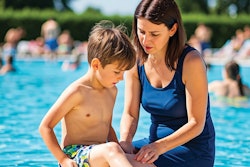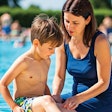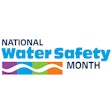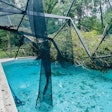
As summer kicks into high gear, families converge on aquatic centers, pools, waterparks and open bodies of water. Taking proactive steps to ensure everyone's safety is vital. The National Water Safety Coalition urges families to keep the following six action steps top of mind all summer long to help prevent drownings and water-related injuries.
- Use Capable & Constant Supervision – Drowning is fast and silent. Actively supervise children and non-swimmers around the water, even when lifeguards are present. Put phones away to avoid distracting activities, such as checking email or social media. Stay within arm's reach of weak or non-swimmers. Designate a water-watcher. If everyone is watching the kids at the pool party, odds are no one will be when something happens. Don't just drop kids off to swim at the pool or waterpark.
- Ensure Water Competency – No matter your age, learning to swim and survive in the water is one of the best ways to be safer in and around the water. Enroll kids in swimming lessons and if you can't swim, enroll yourself, too. A USA Swimming Foundation study shows that if a parent doesn't know how to swim, there is only a 13% chance that their child will learn. You can find lessons through your local American Red Cross, park and recreation department, YMCA, or swim school. For a fun way to get involved and share this message, be a part of the World’s Largest Swimming Lesson — taking place at aquatic facilities around the globe on June 22.
- Prevent Unsupervised Access to Water – Barriers and alarms help prevent access to water during non-swim times. Almost 70% of toddler drownings occur during non-swim times. Four-sided fencing with a self-closing, self-latching gate help prevent unplanned access.
- Swim With a Buddy – Do not allow anyone to swim alone. Even at a public pool or a lifeguarded beach, use the buddy system.
- Wear a Life Jacket – Adults and kids should always wear a properly fitted U.S. Coast Guard-approved life jacket while boating. Non-swimmers and inexperienced swimmers should also always wear a life jacket when in and around the water. Inflatable toys can be fun but can also provide a false sense of security. Water wings and others items marketed as swim aids are not a substitute for U.S. Coast Guard-approved life jackets.
- Be Prepared for Emergencies – Learn how to prevent and respond to emergencies by learning CPR. Always have an action plan.
Read Next
Swimming the Seine, Part 2
September 9, 2025







































